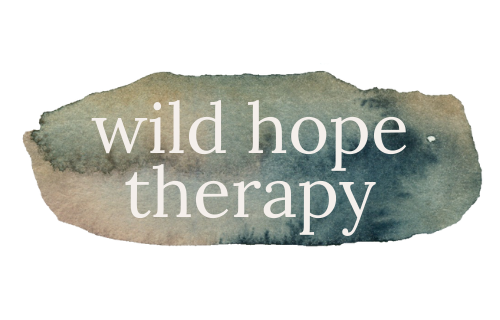'grief comes in waves': therapy for trauma and loss of all kinds
In the last few years, loss has been more present than possibly ever before for many of us. There has been incredible loss of life, but also loss of experiences, time with people we love, and normal life milestones. As we begin to slowly return to some semblance of life before the pandemic, the things we have lost and the things that will never be the same are more and more apparent.
Julie Iuiliano, LISW specializes in working with grief at Wild Hope Therapy in Columbus, OH. Julie helps her clients to understand that “we can experience grief even if it’s not around someone we lost.” Similarly to our collective experience of adjusting to life two years into a pandemic, those who are processing trauma often find the need to grieve what they lost or missed out on due to circumstances out of their control. Things like a relationship with a caring caregiver, a playful childhood, typical emotional development, and other milestones may all need to be labeled and mourned as part of the process of addressing trauma and loss.
Grief and trauma often go hand-in-hand, and therapy for both concerns can be similar. Julie became focused on grief therapy through her work with children who lost family members to murder. Julie noticed that grief is something that is often done in isolation, and those who are grieving can feel pressure to appear “ok” long before they are actually ready to acclimate to normal life. “It reminded me that we hide grief away societally, and it is a universal experience whether it is processing the loss of someone we love or managing life transitions,” Julie says.
In The Year of Magical Thinking, Joan Didion said “Grief is different. Grief has no distance. Grief comes in waves, paroxysms, sudden apprehensions that weaken the knees and blind the eyes and obliterate the dailiness of life. Virtually everyone who has ever experienced grief mentions this phenomenon of ‘waves.’” Rather than promising to help someone feel exactly like who they were before the loss, Julie sees grief work as a process of adaptation and integration. She says “I enjoy watching someone understand how to integrate their grief, and find new ways to identify who they are.”
When working with both grief and trauma, Julie does not shy away from the fact that the work can be difficult. But she believes that therapy can help to create acceptance and resilience. Of her previous work with children with adverse childhood experiences, Julie says “I enjoyed noticing the resilience and healing that therapy could provide.”
It also can be difficult to open up about grief and trauma, but the role of a grief therapist or trauma therapist is to support the client in developing trust and a sense of safety. Julie finds that providing education about how the body responds to stress and using that to develop coping strategies can be effective for clients. “Often, individuals do not wish to share their stressful experience, but understanding the stress response in our body, and speaking about our emotions and identity, is something I am honored to journey with clients on.”
Recovering from loss and trauma is a process of creating meaning out of your experiences. Julie helps her clients to feel safe and supported as they embark on this difficult journey because she feels passionate that healing is possible, even if it is hard. She says “This process might be hard because it’s soul work.”
